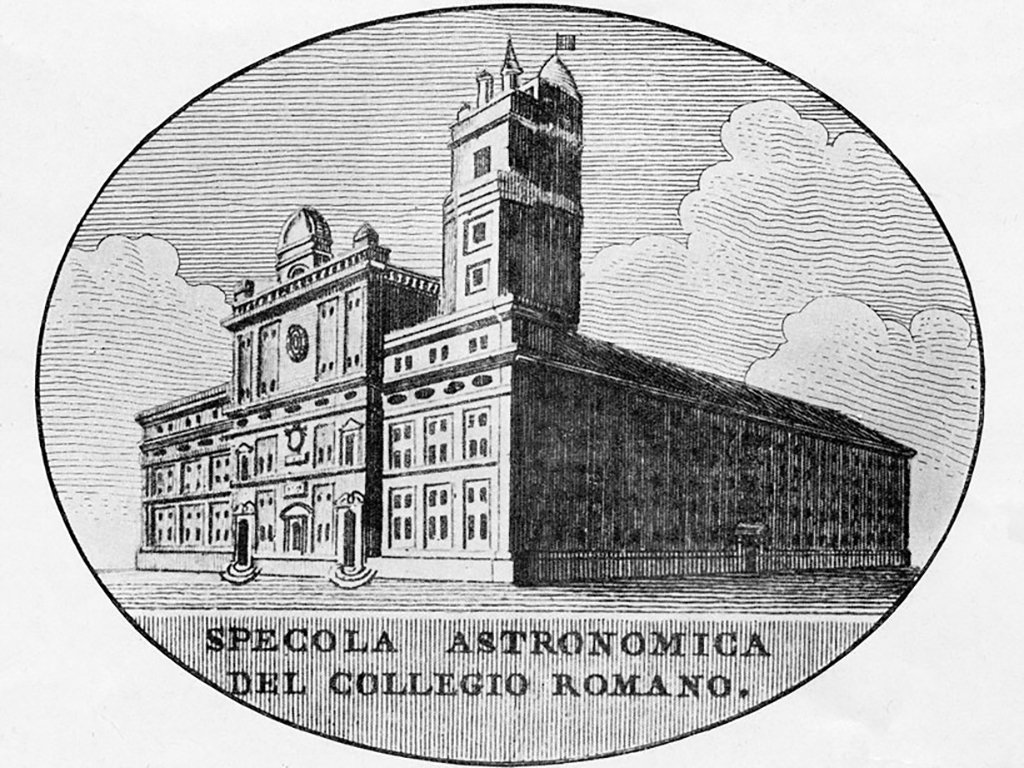Calandrelli Tower

The Collegio Romano was founded by St. Ignatius in 1551 in a modest house at the foot of the Campidoglio. In 1585, Pope Gregory XIII endowed a new magnificent site, and the institution quickly became the most important center of study for the Society of Jesus. Its syllabus, while focused on theology, philosophy, and other humanities, was always accompanied by scientific subjects, in particular mathematics and astronomy. However, in the first two centuries of the College’s activity there was no astronomical observatory: celestial phenomena were observed from windows and balconies.
After the suppression of the Society of Jesus in 1773, instruction at the Roman College was entrusted to the secular clergy. In 1774 the Pope ordered the establishment of the Pontifical Observatory there. The astronomy professor, Giuseppe Calandrelli, was appointed director but the establishment of the observatory remained only on paper. Finally, in 1786, Cardinal Zelada had a 125 foot tower constructed at the College’s expense and he purchased some small instruments at his own expense.
In 1804, Pope Pius VII went to the Roman College to observe a total solar eclipse. Impressed by this experience he promised to supply the appropriate equipment and adequate support for the observatory. Later that year, when he went to Paris to crown Napoleon, he took the opportunity to acquired an achromatic telescope and a good pendulum clock. Later on he acquired a Reichenbach (Munich) transit telescope.
With these quite modest instruments Calandrelli and his colleague, Andrea Conti, together with Giacomo Ricchebach who joined them in 1816, were able to begin astronomical research. In the eight volumes of their work, Opuscoli Astronomici (1803-1824), they describe the observations which they carried out on the Sun, on the planets and comets, and on stellar occultations and triangulations made of Rome and the environs.
Unfortunately, the tall tower was not stable enough or strong enough to support larger 19th century telescopes.
